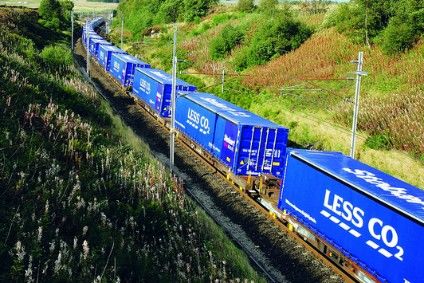
The length and complexity of the apparel supply chain means collaboration is often the only way for businesses to grow leverage when it comes to achieving full transparency, according to UK supermarket retailer Tesco, which is busy joining a number of initiatives to try to bring about change.
Employing over 440,000 workers across 6,800 stores globally, Tesco saw group sales reach GBP51bn (US$66.65bn) in its last fiscal year, with its F&F clothing division outperforming the market with growth of 2.6%.
At the same time, the retail behemoth has also been working to clean up its fashion supply chain as pressure intensifies on the industry to operate more sustainably and ethically.
Sustainable commitment
As part of its ‘Little Helps Plan’ corporate responsibility and sustainability strategy, Tesco this year committed to achieving zero net deforestation in raw materials sourcing for wood products – including viscose. This has involved the retailer mapping its viscose supply chain and developing a viscose sourcing policy to ensure sustainable implementation across its supply chain.
Beyond this, the retailer has also committed to addressing the impacts of its agricultural and manufacturing supply chains on the climate, oceans and freshwater – most of which are also relevant to the viscose supply chain, it says.

US Tariffs are shifting - will you react or anticipate?
Don’t let policy changes catch you off guard. Stay proactive with real-time data and expert analysis.
By GlobalData“We believe transparency is the foundation of sustainability – we need to know where we source from in order to spot any issues and drive change in the right place,” Carmen Chan, Tesco’s senior sustainability and fabric manager for F&F clothing, tells just-style. “Transparency also enables us to map the environmental impacts of the key materials we source.”
In the case of Tesco’s clothing products, this prioritises cotton, which forms nearly 60% of the materials used in its garments.
Last year, the retail group committed to sourcing 100% sustainable cotton, and is now also looking to use more recycled polyester in its product ranges.
Chan says the group is working towards sustainability across all production stages of the textile supply chain. This has seen it become a member of the cross-industry forum Zero Discharge of Hazardous Chemicals (ZDHC), and a signatory to the Greenpeace Detox campaign to improve chemicals management in the wet processing stages of the textile supply chain.
Achieving leverage
“The clothing industry is complicated and sometimes the biggest sustainability impacts can be found up many tiers in the supply chain, such as the agriculture or wet-processing stages,” explains Chan. “This can be many steps away from the final consumer and retailers may not have much leverage to drive change as individual companies.” However, collaboration by various businesses can help grow leverage.
She adds: “This length and complexity of the supply chain can also make it difficult to get accurate data and achieve full transparency. Also sourcing globally, as we do, can add to these complications – considering variations in levels of sustainability awareness, local regulations and enforcement.”
Tesco sources the bulk of its clothing from Bangladesh, Cambodia, China, Egypt, India and Sri Lanka, with items also coming from Italy, Myanmar, Vietnam, Pakistan and Romania.
The retailer says it regularly visits its fabric mills around the world in order to strengthen its upstream relationships through training and workshops.
“Most of our mills are doing a great job in producing in line with our policies and standards,” Chan asserts. “Many of them are keen to understand what is good practice and work towards this. We are also finding that there are knowledge gaps in some mills; many do not have a direct relationship with retailers or a clear understanding of sustainability. For these, we continuously develop awareness and training sessions for the owner and their technical team. We help them to build their capacity to understand the issue and support them to develop best practices and share with other peers.”
Tesco has been active in mapping its supply chain for its F&F clothing and footwear, covering 100% of its tier one suppliers. The retailer says it is part of the company’s wider efforts with its suppliers to “have a strong voice to ensure decent working conditions.”
“The aim of mapping our supply chain is to improve our transparency, understand where we source, identify any issues they may face and address them,” Chan says.



